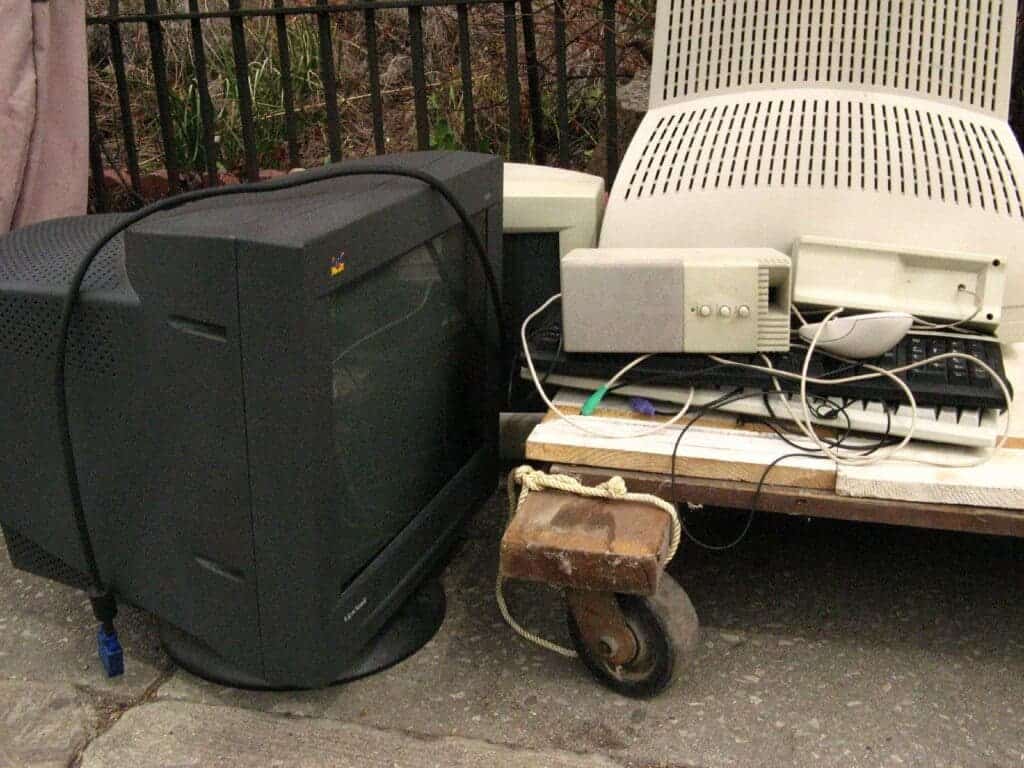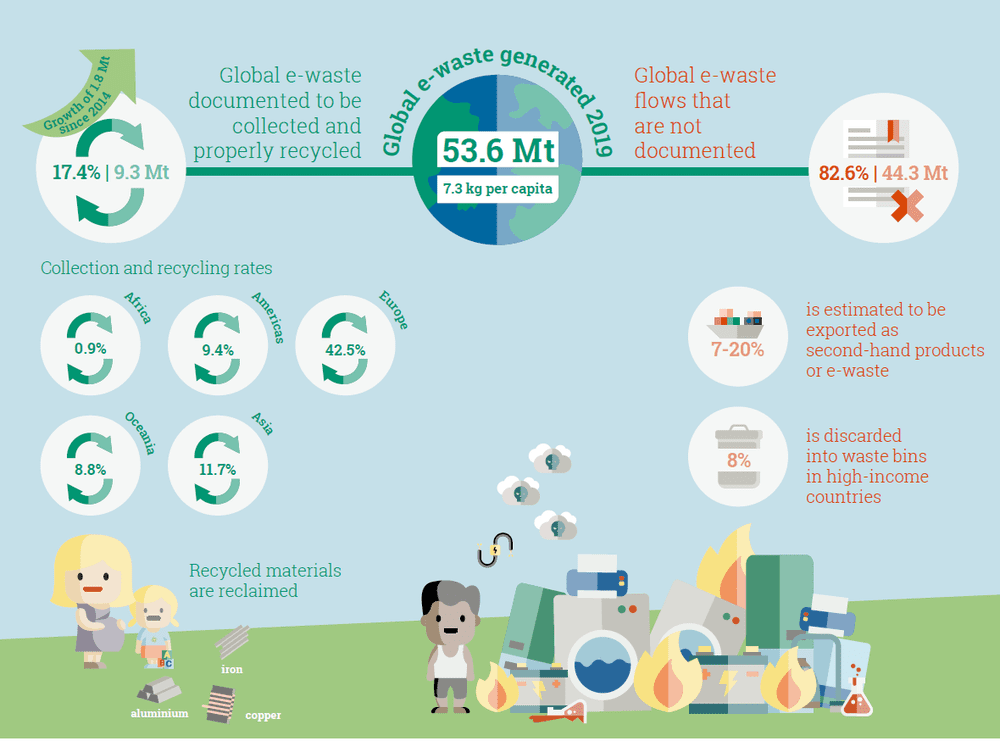Electronic waste is already well-established a global environmental problem, with millions of TVs and cellphones ending up in landfills or incinerated every year instead of being recycled. Still, the situation isn’t the same everywhere, according to a new study, which highlighted the drop in e-waste in the United States.

There is no federal-level e‐waste policy in the US — instead, e‐waste management is handled through a patchwork of state regulations. This has limited the number of studies on the issue, with most focused on other parts of the world. In the European Union, for example, legislations are uniform for all nations.
In a novel study, researchers from Yale University found that residential e-waste in the US is declining, with a net mass reduction of almost 10% since its peak in 2015 — but this isn’t really as good a sign as it seems. Instead, it’s mainly due to the disappearance of bulky cathode-ray tube (CRT) televisions and computer monitors and their replacement with thinner electronics.
CRT displays in the waste stream peaked in 2011, just a few years after the digital transition in television broadcast signals and the rapid switch to digitally-enabled flat-panel TVs. While CRT displays have declined in the waste stream since their peak, these devices still make up about one-third of the total mass of e‐waste.
“They emerged as a critical waste management problem due to the potential release and toxicity of the lead they contain, leading to policy and technology solutions aimed at keeping them in productive use. However, reuse and recycling pathways diminished along with consumer demand for these TVs,” the researchers wrote
Now, the contribution of flat panel display devices to total e‐waste is also becoming increasingly significant and will soon surpass CRTs with about 34% contribution to the total waste stream mass. Flat panels often have higher failure rates and shorter lifespans, leading to more frequent replacement cycles.
Callie Babbitt, one of the study’s authors, said that the decline in bulkier displays means that e-waste regulations will have to be rethought. Most of the state laws have targets based on product mass. But as the overall mass of e-waste declines, meeting those targets becomes more difficult, she argued.
The goal of the current regulations had been to avoid electronics with high levels of lead and mercury out of landfills, as they can leach into the environment. But now, a more significant concern is how elements like cobalt and indium can be recovered, as they are very scarce in the Earth’s crust.
Shahana Althaf, the lead author of the study, said that changing the e-waste recycling system to encourage the capture of more of these critical elements would help the US secure the supply of the ingredients needed to manufacture electronic devices. There are geological uncertainties that pose a threat to the US, she said.
“E‐waste management based on resource recovery could expand opportunities to both reduce sustainability impacts of primary mining and create a domestic supply of scarce materials such as cobalt and rare earth elements, which are currently sourced mostly from China, a geopolitical competitor of the US,” the researchers wrote.
There has to be a paradigm shift, they argued, through a joint effort from all stakeholders. Policymakers should change incentive structures and collective targets, recyclers should create and scale up business models for product reuse and manufacturers should adopt designs that maximize recycled content.
Still, this is a global issue that needs global solutions. A report by the UN earlier this year showed humans generated 53.6 million metric tons of electronic waste in 2019, almost two million metric tons more than the previous year. Only 17% of the waste was recycled and the rest ended up in landfills or incinerated.

Citizens of northern European countries produced the most e-waste last year, 22.4 kilograms per person. The amount was half that seen in eastern Europe. Australians and New Zealanders also ranked high with 21.3 kilograms per person, while in the US and Canada the figure was 20.9 kilograms.
The study was published in the Journal of Industrial Ecology.









